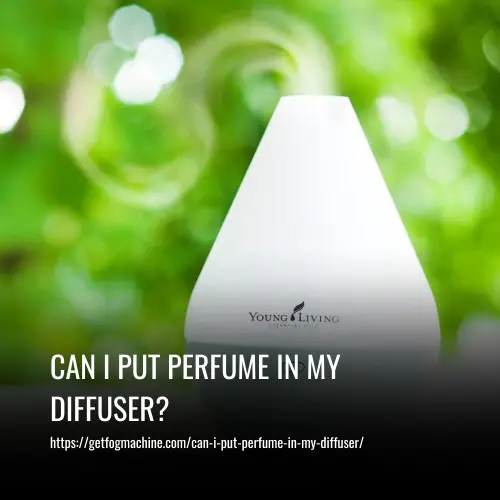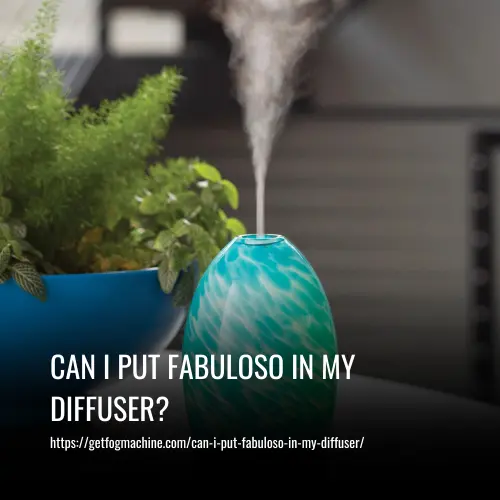Using a humidifier without a filter is possible, but it may not be as effective or long-lasting. Filters in humidifiers play a crucial role in trapping dust particles, improving air quality, and keeping moisture in the room. Without a filter, the humidifier may not be able to achieve the same level of air quality improvement.
Additionally, using a humidifier without a filter can potentially damage the unit over time. Therefore, it is generally recommended to use humidifiers with filters to ensure optimal performance and longevity.

What Does A Humidifier Filter Do
A humidifier filter plays a crucial role in maintaining the cleanliness and performance of a humidifier. It filters out mold, bacteria, and mineral deposits that can accumulate in the water tank. These impurities can pose health risks when inhaled and can also shorten the lifespan of the appliance.
Regular cleaning of the filter is necessary to prevent clogging and ensure optimum filtration. Eventually, the filter will need to be replaced as it becomes filled with dirt and bacteria.
Why Use a Humidifier without a Filter
Here are a few reasons why people choose to use filterless humidifiers or remove the filter from their humidifiers:
1. Cost-effective
Traditional humidifiers often require expensive replacement filters that need to be replaced regularly. By using a filterless humidifier or removing the filter, you can save money on filter replacements.
2. Less frequent cleaning
With a filterless humidifier, you don’t need to clean it as often. If you use distilled water, the unit can go for longer periods without requiring cleaning. While eventually, it will still need to be cleaned, the intervals between cleanings can be extended.
3. Quiet operation
Filterless humidifiers typically don’t come with a fan, making them operate more quietly compared to humidifiers with a fan for air circulation. If you value a quiet environment, a filterless unit may be the ideal choice.
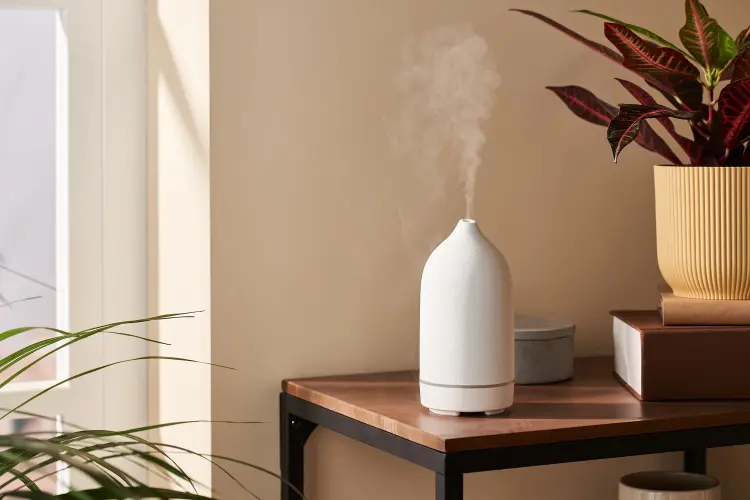
How to Operate a Humidifier Without a Filter
Using a filterless humidifier can be a cost-effective and convenient option. Here’s a step-by-step guide on how to operate a humidifier without a filter:
1. Unplug and remove the filter (if applicable)
Start by disconnecting the power cord of the humidifier. If your unit has a filter, remove it according to the manufacturer’s instructions. Filters can usually be taken out from the sides or by removing the top cover.
2. Drain and refill the water tank
Remove the water cap or tank from the humidifier and empty any remaining water. Fill the tank with distilled water, which helps reduce mineral deposits, or use filtered water as an alternative.
3. Turn on the humidifier
Once the tank is refilled, turn on the humidifier and adjust the settings according to your comfort level. Some humidifiers may have controls for humidity level and mist output, so adjust them as desired.
4. Monitor and maintain
Regularly check the water level and refill the tank as needed to ensure continuous operation. It is also important to follow the manufacturer’s instructions for maintenance, which may include cleaning the humidifier periodically to prevent mold and bacteria growth.
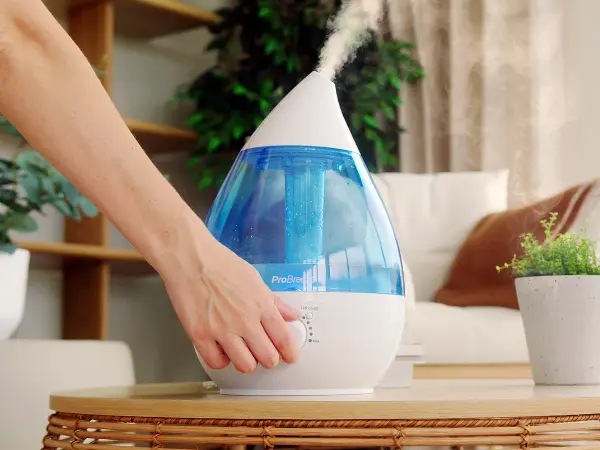
Advantages of Using Humidifiers Without Filters
Humidifiers without filters offer several advantages compared to traditional humidifiers with filters. Here are some key benefits:
1. Noiseless Operation
Humidifiers without filters are extremely quiet in operation. Most of these devices don’t have fans and use ultrasonic technology to produce a fine mist. This makes them ideal for use in nurseries, bedrooms, offices, and other quiet spaces where noise can be a concern.
2. Easy Maintenance
One major advantage of filterless humidifiers is that they eliminate the need for regular filter replacement or cleaning. This not only saves you money on filter replacements but also makes maintenance hassle-free. Simply remove any mineral deposits or impurities from the water tank and you’re good to go.
3. Additional Features
Many filterless humidifiers come equipped with extra features like timers, humidity control, adjustable mist output, and even aromatherapy capabilities. These added functionalities enhance the convenience and customization options of the device, allowing you to create the perfect indoor environment according to your preference.
4. Affordable Operation
Without the need for filter replacements or constant cleaning, filterless humidifiers offer long-term cost savings. You won’t have to spend money on purchasing filters or on maintenance-related supplies. This makes filterless humidifiers a more affordable option for those looking to improve indoor air quality without breaking the bank.
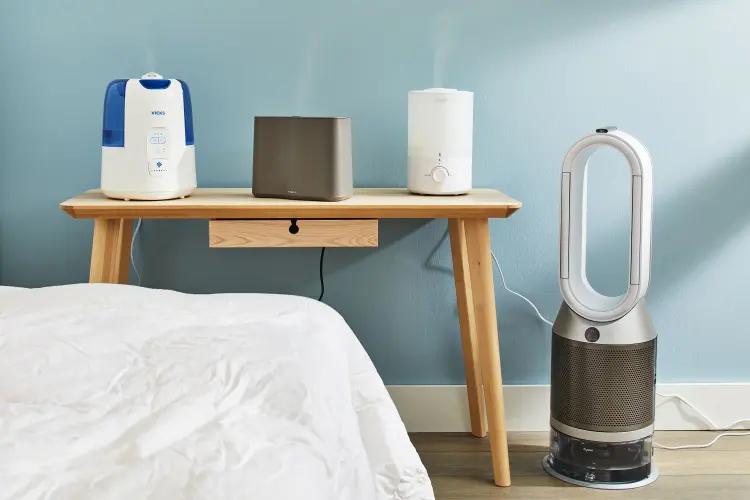
What Are the Risks of Using a Humidifier without a Filter?
Using a humidifier without a filter may offer some benefits, but it also comes with certain risks that should be considered. Here are some of the potential risks of using a humidifier without a filter:
1. Bacteria and Mold Growth
Without a filter to trap and remove impurities, the inside parts of a filterless humidifier can become a breeding ground for bacteria and mold. These contaminants can be released into the air along with the moisture produced by the humidifier. This can potentially cause respiratory problems, particularly for individuals who already have allergies or asthma.
2. Water Quality Issues
If tap water is used in a filterless humidifier, the minerals and contaminants present in the water can be dispersed into the air as well. This can negatively impact air quality and potentially exacerbate respiratory issues. To mitigate this risk, it is recommended to use distilled water in the humidifier to ensure the water is free from impurities.
3. White Dust Accumulation
Over time, the water used in the humidifier can leave behind a white, powdery residue, especially in areas with hard water. This white dust can pose a danger to individuals with allergies or asthma as it can trigger symptoms and worsen their condition. Regular cleaning of the humidifier and the use of distilled water can help reduce the accumulation of this residue.
4. Excessive Humidity
When using a filterless humidifier or if the filter has been removed, it is crucial to monitor and control the humidity levels in the room. Too much moisture in the air can lead to problems such as condensation on walls and windows, unpleasant odors, and the growth of mold and mildew. It is important to adjust the settings on the humidifier to maintain a comfortable and healthy humidity level.
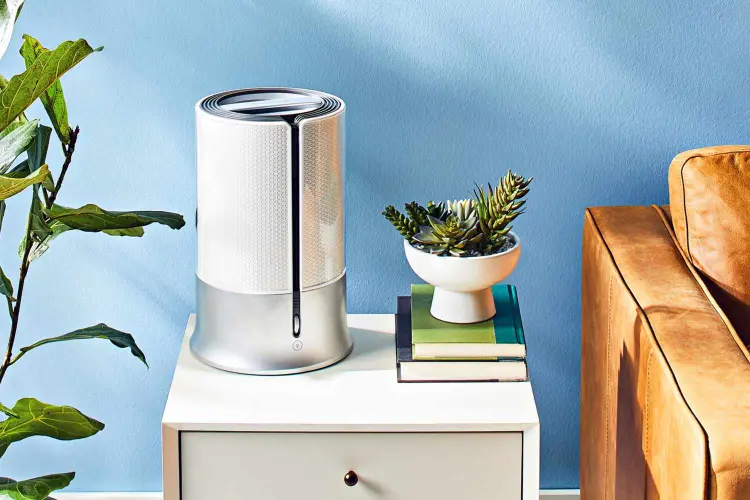
Should You Use a Humidifier without a Filter
Choosing whether or not to use a humidifier without a filter is a personal decision, with both risks and benefits involved. If you opt to use a filterless humidifier, it is important to take the necessary precautions to maintain air quality.
Use distilled water and clean the humidifier regularly to minimize the release of bacteria and mold. Monitoring and adjusting the humidity levels in your home is crucial. By following these precautions, you can mitigate the potential risks associated with using a humidifier without a filter.
Is It Safe to Run a Humidifier Without a Filter
Yes, it is safe to run a humidifier without a filter. Most humidifiers undergo antibacterial treatments during the manufacturing process, ensuring microbial contamination is not a concern. However, it is important to be mindful of mineral deposits that can accumulate when using hard water. Simply wiping off the deposits with a dry cloth can prevent any issues.
To further minimize potential mold growth, it is recommended to soften the water before using it in the humidifier. This can be done by boiling tap water or using demineralization cartridges. Additionally, installing reverse osmosis filters in your home’s water supply can help filter tap water and prevent mineral buildup.
Which One is Better: Filtered or Non-filtered Humidifier
Filtered and non-filtered humidifiers have their own advantages and disadvantages, making it a matter of personal preference. Filterless humidifiers are easier to maintain as they do not require regular filter replacements and are generally easier to clean.
On the other hand, if air quality is a concern, a humidifier with a filter may be a better choice as it can help remove contaminants from the air and improve indoor air quality. Ultimately, it is important to consider your specific needs and preferences before deciding on the type of humidifier to use.
How to Clean a Humidifier Without a Filter?
Regular cleaning of your humidifier is essential to prevent the growth of harmful mold and bacteria. While some humidifiers come with filters that need to be replaced, there are also filterless models available that require a different cleaning approach. Here’s how you can clean a humidifier without a filter:
1. Unplug and Disassemble
Begin by unplugging the humidifier and disassembling all removable parts according to the manufacturer’s instructions. This usually includes removing the tank, nozzle, and any other detachable components.
2. Vinegar Soak
Fill a bowl with white vinegar and place the removable parts in it. Make sure the vinegar covers the areas that come into contact with water, as this will help remove mineral deposits and disinfect the surfaces. Allow the parts to soak for about 30 minutes.
3. Brush Away Stains
Use a bristle brush to gently scrub away any stubborn stains or mineral buildup. Be thorough in scrubbing all surfaces, including the tank and base of the humidifier.
4. Disinfecting Solution
To eliminate bacteria and further disinfect the humidifier, prepare a solution by adding a tablespoon of bleach to a gallon of water. Fill the tank with this solution and let it sit for approximately 15-20 minutes.
5. Rinse with Clean Water
After the disinfecting period, empty the tank and thoroughly rinse it with clean water. Make sure to rinse all other components as well, ensuring that no bleach or vinegar residue remains.
6. Air Dry
Allow all parts of the humidifier to air dry completely before reassembling. This helps prevent the growth of mold spores and bacteria.
7. Regular Maintenance
Remember to clean your filterless humidifier regularly, ideally once a week, to ensure optimal performance and air quality. Follow the manufacturer’s instructions for specific cleaning and maintenance procedures.
By following these simple steps, you can effectively clean your humidifier without a filter, maintaining a healthier and more comfortable indoor environment.
What To Consider When Using A Humidifier Without A Filter
When using a humidifier without a filter, there are several factors to consider in order to maintain optimal performance and ensure air quality.
1. Types Of Water
When using a filterless humidifier, it is important to use distilled water or at least purified water. Distilled water, which has minimal dissolved minerals, prevents the formation of mineral buildup in the tank. As a result, no white dust will be expelled into the air. Using purified water also reduces the presence of germs in the machine, providing better air quality even without the protection of a filter.
2. Frequency Of Cleaning
Even when using distilled or purified water, it is necessary to increase the cleaning frequency compared to humidifiers with filters. Mold spores and dirt in the air can settle in the water tank, and without a filter to clean them off, regular cleaning is essential. This helps prevent the survival and growth of microorganisms in the stagnant water.
3. Humidity Control
Filtered humidifiers often use a fan to blow out the vapor, which slows down the evaporation process. Without a filter to impede evaporation, more moisture particles may enter the air. As a result, it may be necessary to adjust the settings to prevent the room from becoming overly humidified. Finding the right balance is important, as both dry air and damp air can have negative consequences such as discomfort, dust mite problems, and mold growth.
By considering these factors and taking appropriate measures, you can effectively use a humidifier without a filter while maintaining optimal performance and indoor air quality.
FAQs
Using a humidifier without a filter can be safe as long as you take the necessary precautions. However, it is important to note that using a filter helps remove impurities and maintain air quality.
The frequency of filter replacement depends on the type of filter and the manufacturer’s guidelines. Some filters may need replacement every few months, while others can last up to a year. Consult your owner’s manual for specific instructions.
Humidifiers offer various benefits, including reducing static electricity, relieving congestion, and easing dry skin. They can also improve indoor air quality by adding moisture to the air.
The amount of electricity a humidifier consumes depends on its type and size. Generally, humidifiers are not considered high-energy consumers, but larger units may use more electricity than smaller ones.
No, not all humidifiers have filters. Filterless models, such as ultrasonic and warm mist humidifiers, do not require filters. However, evaporative and drum-style humidifiers typically come with filters.
Using hard water in filterless humidifiers can cause mineral buildup, reducing their effectiveness. It is recommended to use distilled or purified water to prevent mineral deposits and white dust formation.
Filters help remove impurities from the water, ensuring clean and healthy moisture output. They also prevent mold and mildew growth, extend the humidifier’s lifespan, and protect its components from damage.
Conclusion
Using a humidifier without a filter is possible, but it is important to consider the potential drawbacks. While a filter is not necessary for all humidifiers, it plays a crucial role in maintaining air quality and preventing the growth of mold and bacteria. Filters help remove impurities from the water, ensuring clean moisture output and protecting the longevity of the humidifier.
Using hard water in filterless humidifiers can lead to mineral buildup and the formation of white dust, which can be harmful to both the humidifier and the air quality. To avoid these issues, it is recommended to use distilled or purified water in filterless humidifiers. This will prevent mineral deposits and ensure optimal performance.

